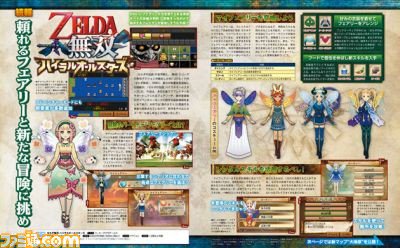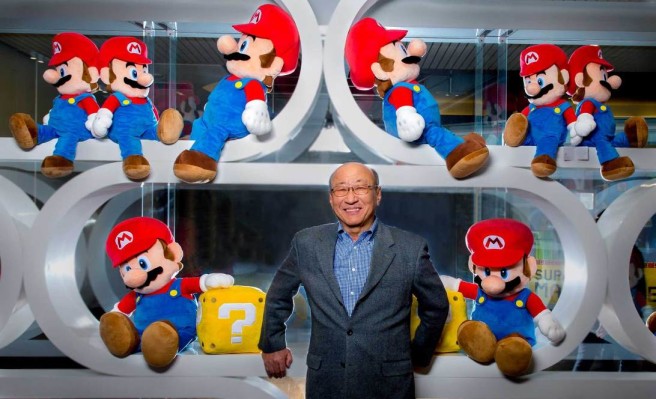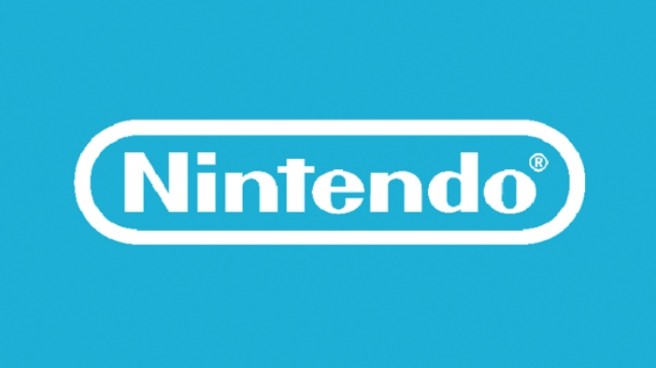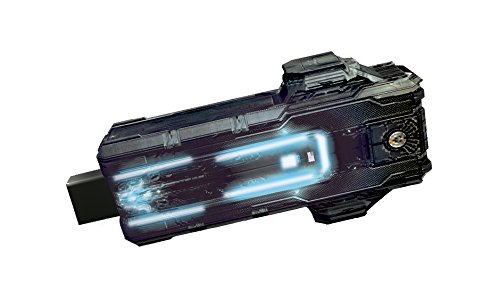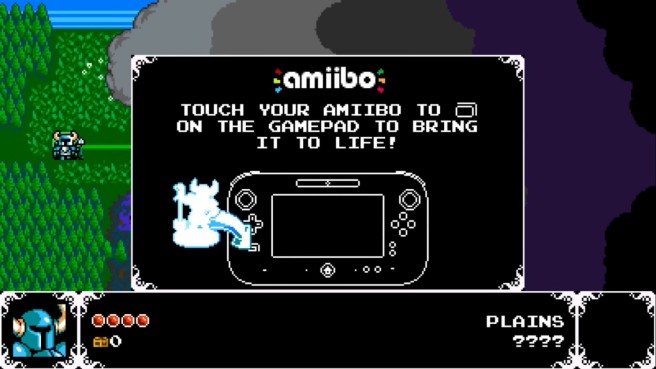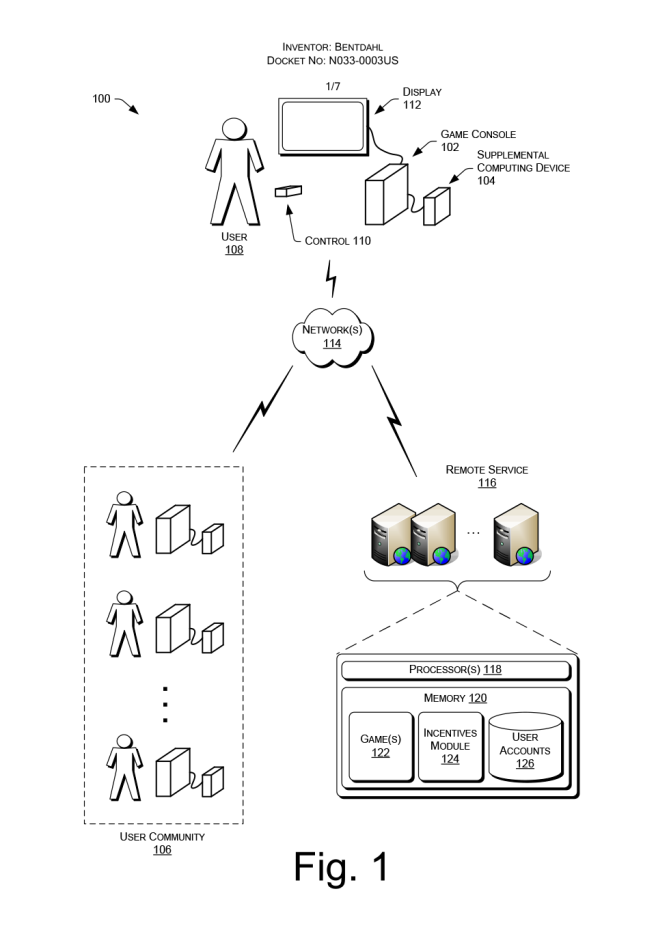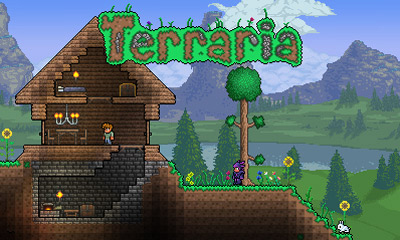Hyrule Warriors Legends has a “My Fairy system”, Great Sea map in Adventure Mode
Posted on 10 years ago by Brian(@NE_Brian) in 3DS, News | 6 Comments
Famitsu has published a brief article about Hyrule Warriors Legends for its magazine coverage this week. In it, we learn about two new elements in the game.
First up, Hyrule Warriors Legends will have a “My Fairy” system. Famitsu doesn’t go in-depth about this, but indicates that it’ll be used to help players. Also confirmed is a new Great Sea map in Adventure Mode.
Expect more details about both of these items when Famitsu releases tomorrow.
Minecraft: Wii U Edition confirmed, out on December 17
Posted on 10 years ago by Brian(@NE_Brian) in News, Wii U eShop | 103 Comments
Minecraft: Wii U Edition is official, and it’s coming out very soon. Nintendo and Mojang have announced that the game will be available through the Wii U eShop starting on December 17 for $29.99.
On Wii U, Minecraft will offer off-TV play. Additionally, it’ll come bundled with the following add-on packs: Battle & Beasts Skin Pack, Battle & Beasts 2 Skin Pack, Natural Texture Pack, City Texture Pack, Fantasy Texture Pack, and Festive Mash-up Pack. Nintendo has also teased that the company is collaborating with Mojang “on new content for Nintendo fans to be released at a future date.”
These add-on packs will be available separately at launch next week:
1. Festive Skin Pack
2. The Simpsons Skin Pack
3. Doctor Who Skins Volume 1
4. Doctor Who Skins Volume 2
5. Star Wars Classic Skin Pack
6. Star Wars Rebels Skin Pack
7. Star Wars Prequel Skin Pack
8. Mass Effect Mash-up Pack
9. Skyrim Mash-up Pack
10. Plastic Texture Pack
11. Candy Texture Pack
12. Cartoon Texture Pack
13. Steampunk Texture Pack
14. Pattern Texture Pack
15. Greek Mythology Mash-up Pack
16. Halloween 2015 Mash-up Pack
Minecraft: Wii U Edition was initially outed through a rating on PEGI. However, this is the first time that we’re hearing about it in any official capacity.
Head past the break to read up on today’s full announcement.
More: Minecraft: Wii U Edition, Mojang, top
Nintendo Download (12/10/15, Europe): FAST Racing NEO, SteamWorld Heist and more
Posted on 10 years ago by Matt(@OnePunchMaz) in 3DS eShop, News, Wii U eShop | 1 Comment
This week’s European Nintendo Downloads are as follows:
Wii U Download
FAST Racing NEO – €14.99/£10.99
Angry Video Game Nerd Adventures – €9.99/£8.99
Dinox – €4.99/£4.49
Voxel Maker – €4.49/£3.49
Wii U Virtual Console
Game & Watch Gallery Advance (GBA) – €6.99/£6.29
Polarium Advance (GBA) – €6.99/£6.29
3DS Download
SteamWorld Heist – €16.99/£11.99 (Ends December 31, normally €19.99/£14.99)
Angry Video Game Nerd Adventures – €9.99/£8.99
Terraria – €19.99/£16.99
Petit Novel series – Harvest December – €11.99/£9.19
Rytmik Ultimate (Cinemax) – €17.99/£15.99 (€9.99/£8.99 if you own The Keep on the same Nintendo 3DS)
The Magic Hammer – €4.99/£4.49
3DS Themes
Le Qpiz superoine nella notte! – €0.99
Pedalate Qpiz! – €0.99
Le Qpiz e la neve: bel lancio Liebe! – €0.99
Happy Holidays with Mario & Luigi – €1.99/£1.79
eShop Sales
Wii U
Citizens of Earth- €4.99/£4.00 (Ends December 24, normally € 11.99/£9.99)
Life of Pixel – €4.99/£4.49 (Ends January 9, normally €9.99/£8.99)
Rock’N’Racing Off Road – €2.99/£2.69 (Ends January 7, normally €5.99/£5.39)
ZaciSa: Defense of the Crayon Dimensions! – €0.99/£0.79 (Ends January 7, normally €2.99/£2.29)
3DS
Citizens of Earth – €4.99/£4.00 (Ends December 24, normally € 11.99/£9.99)
Adventure Bar Story – €3.99/£3.19 (Ends December 31, normally €4.99/£3.99)
Brunch Panic – €2.99/£2.49 (Ends December 31, normally €3.99/£3.39)
KAMI – €1.99/£1.59 (Ends December 31, normally €2.99/£2.39)
Shin Megami Tensei IV – €9.99/£7.40 (Ends December 24, normally €19.99/£17.99)
Sweet Memories Blackjack – €2.99/£2.39 (Ends December 31, normally €3.99/£3.19)
Zombie Panic in Wonderland DX – €4.99 / £4.49 (Ends January 9, normally €7.00/£6.30)
Source: Nintendo PR
More: Europe, Nintendo Download, top, Virtual Console
[Let’s Talk] What are you playing? – December 2015
Posted on 10 years ago by Brian(@NE_Brian) in General Nintendo, Let's Talk | 24 Comments
Let’s Talk #32: What are you playing? – December 2015
It’s the first weekend of a new month. Specifically, December has now rolled on in! So we want to know: what are you playing? Tell us in the comments below!
As for me, I’ve been a bit quiet with gaming as of late. I did start up Fantasy Life, but I’m just a few hours in. I like what I’ve played thus far though!
Highlights from last week’s topic: Have you tried out Nintendo Badge Arcade?
Kimishima – career overview, how he helped Wii shortages, feels “responsible for every single gamer”
Posted on 10 years ago by Brian(@NE_Brian) in General Nintendo, News | 46 Comments
TIME recently published an interview with Tatsumi Kimishima, the new president of Nintendo. Topics covered during the discussion included the NX, mobile, Wii U, how long he’ll be around, and more.
There was actually another piece about Kimishima accompanying the interview that went under the radar. The other TIME article went in-depth with history, covering his early career and leading up to the time when he joined Nintendo. There are also interesting quotes (including some from Nintendo of America Reggie Fils-Aime) about how he helped out when Wii was facing shortages and the responsibility he feels towards gamers.
We’ve summarized TIME’s article below. I’d highly advise taking a look at the full article here as well.
More: top
Some sort of Nintendo announcement coming on Monday
Posted on 10 years ago by Brian(@NE_Brian) in General Nintendo, News | 170 Comments
Nintendo is gearing up to make an announcement very soon. Fans should keep an eye out for news sometime on Monday.
Damon Baker, Nintendo of America’s senior manager of licensing and marketing, shared a tease about what’s to come during Nintendo World Report’s podcast in support of Child’s Play. He said earlier today:
“Speaking of announcements, I wish I could tell you guys, but stay tuned for Monday. Monday there’s going to be something… something happening on Monday. It’s going to be big.”
Baker closed off his comments by stating: “Stay tuned, it’s going to be good.”
As far as what announcement is planned, it could be anything. Baker has been known for his involvement with indies so something in that area is one possibility. Maybe it’ll be news about the Smash Bros. presentation airing this month. Ultimately, we really don’t know!
More: Damon Baker, top
Xenoblade Chronicles X Special Edition’s soundtrack has buggy DRM
Posted on 10 years ago by Brian(@NE_Brian) in News, Wii U | 61 Comments
Just a few hours ago, we brought up some of the problems with the Xenoblade Chronicles X Special Edition – specifically the USB drive. This is where the included ten music tracks can be found. To actually access them, you’ll need to start up the “Soundtrack” executable file, which is essentially digital rights managements from Kakasoft. It’s not possible to easily access the music files through normal means (you’ll need to use a different program to extract them).
Unfortunately, it seems as though there are also issues with the implementation of Kakasoft’s program. Reddit user CSFFlame discovered that when booting it up, it “mounts the encrypted folder on the Y drive, then edits the group policy for your computer to block system access to the drive, then edits the registry to hide the drive.” These modifications are not reverted, so it’s impossible to use the drive unless you change things back yourself. This can be a problem in business environments which use drive letters at the end of the alphabet (via Reddit’s WillAdams), so it might not be the best idea to try listening to Xenoblade Chronicles X’s music at work.
There is good news though! CSFFlame successfully discovered a way to restore things to the way they were originally on Win7x64, which will hopefully come in handy to at least some of you. Note that this shouldn’t be a problem for Mac or Linux users since the soundtrack is incompatible with these devices.
Head past the break for CSFFlame’s instructions – follow them at your own risk!
More: Monolith Soft, top, Xenoblade Chronicles X
Shovel Knight amiibo out in Europe on Dec. 11, North America on Jan. 8
Posted on 10 years ago by Brian(@NE_Brian) in 3DS, General Nintendo, News, Wii U | 3 Comments
Yacht Club Games has finally shared a concrete release date for the Shovel Knight amiibo.
In Europe, the figure is officially slated for December 11. North America will be receiving the Shovel Knight amiibo on January 8. Pricing is set at $12.99 / £10.99 / €14.99.
Yacht Club Games spoke about the release timing and stock in a website post:
“You may be wondering why the Shovel Knight amiibo is coming out so much earlier in Europe! It was an agonizing decision, as production difficulties forced us to choose between rushing to ship a tiny, insufficient number of amiibo units before Christmas, or ship a good healthy supply of stock to North America just after Christmas. We’ve received hundreds of emails bemoaning the difficulty in finding some of your favorite amiibo, racing for a pre-order window, issues with scalpers, having trouble unlocking the new features you want to play; so, we made the decision to launch the amiibo in January so there would be enough units available. Hopefully, this later date will make buying a Shovel Knight amiibo easy and fair for everyone. So just be sure to save up that Christmas money for the new year!
On that note, if you’re interested in picking up the Shovel Knight amiibo, then we’d like to implore you to wait for it to release in your territory. There will be plenty and it will not be a limited run, so please don’t feel pressured into importing or buying from scalpers. Don’t spend more than the retail price! Also, keep in mind the new Shovel Knight amiibo features will not function on your game system in your territory until the listed release date. Thank you everyone for your patience!”
On Wii U and 3DS, the Shovel Knight amiibo provides these features:
– Level up to a max level of 50 by finding treasure!
– Earn relics in an all new way while uncovering all-new relics, abilities, and powers you never thought possible!
– Customize the look of your Shovel Knight with cool and crazy cosmetic options!
– Use your Custom Knight seamlessly between Nintendo 3DS and Wii U!
– Battle your way through amiibo exclusive challenge stages that take advantage of the new Custom Knight relics and abilities!
– 5 new solo challenges and 5 new co-op challenges (exclusive to Wii U) await!
And below are some details about co-op multiplayer on Wii U:
– Join a friend’s Shovel Knight campaign and shovel together!
– Use your cooperative skills to help each other out along the way!
– Compete against each other collecting gold and defeating enemies to prove who is the true hero of Shovelry!
– Play with any combination: two Custom Knights, one Custom Knight/one Classic Knight, or 2 Classic Knights.
View a new video showing off the Shovel Knight amiibo functionality below.
More: Amiibo, indie, Shovel Knight, top, Yacht Club Games
New Nintendo patent: Supplemental Computing Devices For Game Consoles (cloud gaming)
Posted on 10 years ago by Brian(@NE_Brian) in General Nintendo, News | 19 Comments
Last June, Nintendo filed a trademark in the United States database for “Supplemental Computing Devices For Game Consoles”. It’s essentially about increasing the speed or quality of the gaming experience – mainly in a cloud gaming context.
Here’s the patent’s abstract:
“Supplemental computing devices that provide processing and/or storage resources to game consoles to assist these game consoles in executing a game. In some instances, a game console locally executes a copy of a game using resources of the game console. In addition, however, the game console may couple to a supplemental computing device that includes resources that the game console may also utilize to increase the speed or quality of a user’s gaming experience. For instance, the supplemental computing device may couple via a physical connection (e.g., a wired connection) to the game console for processing data associated with the game and providing a result back to the console, and/or for storing game data on behalf of the game console.”
If you’d like to read up on more details regarding the patent, you should definitely head on over to this link. It’s interesting, but we’ll have to wait and see what (if anything) comes from this.
More: top
Terraria heading to the 3DS eShop next week
Posted on 10 years ago by Brian(@NE_Brian) in 3DS eShop, News | 4 Comments
Terraria is making a surprise launch on the 3DS eShop next week. Today, publisher 505 Games announced that the title will be available starting on December 10 in both North America and Europe for $19.99 / £16.99.
Here’s a comprehensive overview:
Reach directly into the world of Terraria with uniquely-tailored touchscreen controls, fashioning elaborate structures and fighting off enemies with an intuitive swipe of the stylus. Explore vast fantasy worlds by soaring up to floating islands in the sky or excavating down to the depths of the earth. Wage war on hundreds of different enemies – ranging from Zombies to Goblins to Unicorns to Wyverns – with weapons and armour you’ve crafted yourself. Build amazing structures and dwellings with ease, laying brick and stone with the responsive touch interface.
The Nintendo 3DS version of Terraria offers the ideal introduction to the franchise for the young and old player alike, and a fresh way to play for veterans of the franchise. Share the adventure with your friends, with four player sessions supported through Local Play; a safe and sociable multiplayer environment where players only engage with real-life acquaintances.
With over 1,300 crafting recipes, 150 enemies and 15 bosses to battle, players will have endless hours of fun as they literally dig to the ends of the earth, crafting amazing armor, weapons and other items with what they discover. Players will explore vast and vibrant worlds, encountering treacherous perils -including hundreds of twisted foes, magical creatures, and mighty monstrous bosses like the Eye of Cthulhu – to provide the ultimate test of the player’s combat ability. There may be a few Nintendo surprises in store, too!
Terraria remains on track for a retail release for both 3DS and Wii U. That’ll be happening early next year, along with the digital Wii U version.
Check out a launch trailer for Terraria on 3DS below.
Source: 505 Games PR
